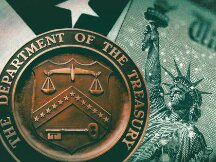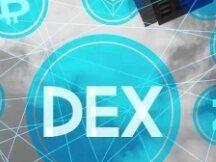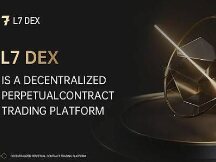New Assessment of DeFi Projects - Assessment of the Central Bank Account Model
Recently, while browsing modern monetary theory (MMT), the author took a closer look at the monetary models of the Central Bank of China and the Federal Reserve, and suggested that the same account model could be used for the Dex project. Because the banking model has financial value, in Dex this project can be considered a reasonable project value eg project appraisal. This article focuses on examining why a banking model can be used to measure a Dex project.
Central bank account template
1. Accounting equivalents and T-accounts
There are two constant equations in traditional accounting.
Assets = Liabilities Owner's equity;
Debit Amount / Balance = Payment / Debt Amount.
The standard T word count formed by the connection with the business model is shown in Figure 1.1.

Daim duab 1.1 T-account of the existing entity
If the balance sheet of the Dex project includes the T-account of the operating company, we see that this situation does not apply because it is difficult to counteract assets and liabilities. Equity in terms of fair capital is the number of tokens provided by the project, and in return for the assets, the value of the assets should be factored into the budget and income. There are a lot of inconsistencies in the reasons for this model, and it is inaccessible.
2. The difference between a T bank account and a general bank account
As mentioned above, when using EVA, DCF, and other native design standards to measure a Dex project, you will always come across a variety of unusual circumstances, such as setting up and fixing backgrounds that affect learning.If you look at a Dex account in a bank account structure, a different situation will occur.
To explain this phenomenon, the author first writes the banking model in a T account, then compares the banking model with the Dex problem, then the banking structure model becomes the Dex project. Figure 1.2 below shows the central bank T-account model.

Daim duab 1.2 Central Bank T Account
Central bank accounts generally have three types of assets.1. Assets announced by foreign companies 2. Government-created contracts and other high-interest loans 3. Declared fiat currencyOverall, the biggest difference between the average bank's balance sheet and the company's balance sheet is the differences in patterns. A bank statement typically identifies the activity and assets of a business, while a bank statement typically identifies all of the business's assets and liabilities in the country. The second part of this article explores the feasibility of a measurement banking model by discussing the general structure of the Dex project and its similarities in Bankruptcy and capital structure of the Dex project. Dex project.
A general overview of the Dex project and the feasibility of a bankruptcy model
1. Normal type of Dex project
Currently, Dex can be divided into:depend onAMM's asset pool modelyetOrder Book Based Market Maker Matching Model, the two account models are very different.
House MA,It is the essence of heritage designed to use the assets of third parties to provide in-depth marketing and financial support with marketable potential. Even if these assets are not part of the Dex project, the Dex project will have the right to use these assets when paying the cost of the investment. Typically, Dex projects pay their own project tokens to third parties who provide the assets as a profitable investment.
Order Book Based Market Maker Matching ModelWithout creating a token, manufacturers provide financial exchanges and third-party depth, and payment plans for businesses create services in their own tokens. .
AMM mode and book modeThe significant difference is in the other policy regarding the use of assets by third parties.. It also leads to the fact that both cannot be used in the central bank account structure.From an industry perspective, the Dex project in the AMM model is a must-have for mid-range banking models. This is because the functions of both are similar and can be drawn directly.
2. Introduction to the Dex project for a banking model
The authors describe the Dex project model in this AMM model for similar details in the banking model.
before,Project tokens provided by Dex that can be presented to the market can be considered “circulating value” in the banking model.From the perspective of the token ecosystem, if a project is considered a large country, the upper limit of the token can be seen as the total currency of the country, and the tokens in the market can be reconciled with "currency. ". Likewise, tokens cannot be considered as two liabilities: "government / public depository" and "Deposits of public institutions" and "bank reserves" can be considered as a position in the hands of a public or private entity which can be eligible. as "public deposit", that is to say, this type of good such as a bank deposit. Money cannot be sent to the store and at the same time manufacture the goods.
second,Assets provided by third parties are considered “gold and currencies”.The assets provided by the third party were injected into the AMM-type Dex project, and the ownership of the assets remains with the third party. Dex projects only "hold" assets. Like foreign investment firms in China, foreign capital flows into central banks. Instead of accessing them directly, the central bank offers home liquidation arrangements to replace them. In this regard, the assets of third parties will be considered as “gold and currencies”.
Finally,Guaranteed project tokens can be considered “deposits”.The two are similar in that the assets issued by the media chief / bank are returned to the central bank for profitability.
Accordingly, this sentence sets up a Dex account using Figure 1.3 as an example.

Figure 1.3 Compte Dex Project T
Therefore
Based on the discussion in Chapter 2, this statement considers:The average bank model can be effective for measuring the Dex project in the AMM category.From a model account perspective, a project's metric should be the equivalent of “competition tokens” and “project revenue”. Alternatively, the project metric can be viewed as the difference between the project's TVL balance and tokens that cannot be returned.
Since the value of the token changes all the time, this model is only suitable for one level of measurement, not for long-term measurement.

Scan QR code with WeChat































